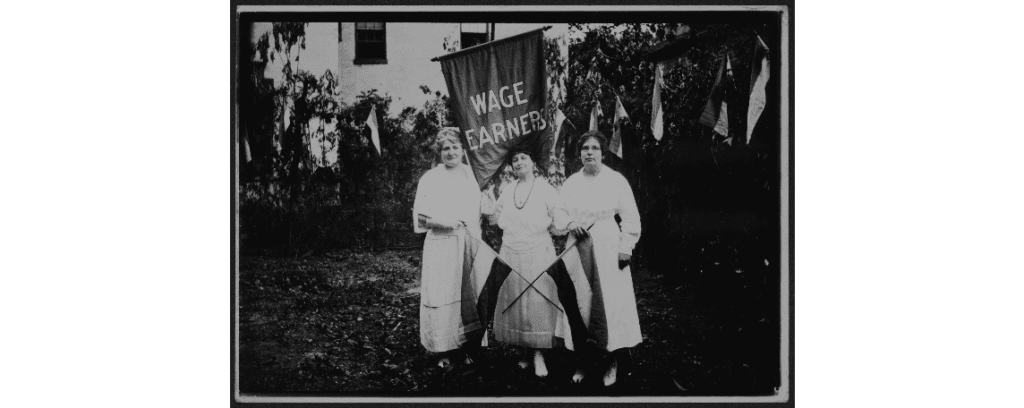Leonora O’Reilly was born in 1870 New York City to Irish immigrants that had come to America to escape An Gorta Mor, or the Great Hunger. Leonora’s class makes her stand out from the other Irish American Suffragists that we have talked about so far. Born into poverty to working class parents, her father died when she was only one year old. At the age of eleven, Leonora was forced to work in a garment factory to help support her family, where she was first introduced to harsh labor conditions. At the age of fourteen she joined the Knights of Labor, the nation’s largest labor organization and the most welcoming to women. This was unlike many other male dominated organizations that were less sympathetic to their experiences. Leonora realized early on that women were more likely to be working in terrible conditions, and were paid less for their labor, encouraging her to participate in both union and suffragist activism. By her early twenties, Leonora was a leading voice for working women in New York City, giving speeches advocating for reform while still working. In 1911, New York City would face the tragic Triangle Shirtwaist Factory Fire that killed 146 people and was caused by the negligence of factory leaders. Prior to the fire, the victims and survivors who were mostly Eastern European, Irish, and Italian women, had worked in the unsafe conditions with poor ventilation and minimal exits. After the disaster, which would be the worst fire New York City would see until 9/11, Leonora helped organize protests pointing to the fire when advocating for labor change. She would also advocate in support of the Irish Rebellion when Irish nationalists lobbied for support from Irish immigrants in America and leaders of the Irish American labor movements. Leonora joined multiple organizations that supported the Irish Rebellion, and used her connections to organize boycotts. Like many, she argued that British imperialism negatively impacted American workers as well.

Unlike Lucy Burns and the Milholland sisters, Leonora represents a different type of suffragist, the working one. Despite many being labor activists, the middle- and upper-class women of the movement did not have the same experiences as their working-class sisters. Leonora helped bring together the working women and the often-wealthier leaders of the suffragist movement. She also held the middle- and upper-class women of the suffrage movement accountable when they acted in ignorance to the struggles of working women. Leonora also created spaces for working women to engage in both the labor and the suffrage movement, including the Wage Earner’s Suffrage League in New York City. After the passing of the 19th Amendment, Leonora would continue advocating for working women and people of color, joining the National Association for the Advancement of Colored People (NAACP) shortly after its founding.